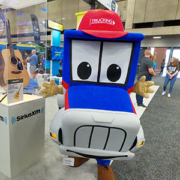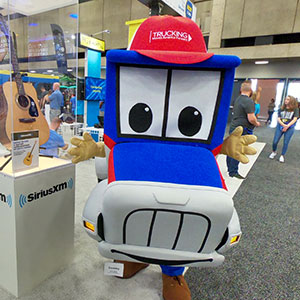Washington Post: U.S. to raise fuel efficiency standards for larger trucks
By Juliet Eilperin
President Obama announced Tuesday that the government will tighten fuel efficiency standards for medium- and heavy-duty trucks, part of an ongoing effort to use his executive authority to address climate change and spur domestic manufacturing.
Speaking at the Safeway distribution center in Upper Marlboro, Md., Obama did not specify what new standard the Environmental Protection Agency and the Department of Transportation should set for these larger trucks, which weigh more than 8,500 pounds, but he said he is confident that manufacturers will be able to meet this “ambitious” goal.
“Don’t make small plans; make big plans,” the president told a crowd of about 275 people, including environmental leaders and trucking industry officials. “And anybody who had dire predictions for the auto industry, said we couldn’t do it, manufacturers couldn’t bring jobs back to America — every time they say that, they’re proven wrong. Every time somebody says you can’t grow the economy while bringing down pollution, it’s turned out they’ve been wrong.”
This is the second time Obama has mandated a cut in fuel consumption and carbon emissions from medium- and heavy-duty trucks, a category that includes large pickup trucks, school buses and 18-wheel tractor-trailers.
An earlier rule, finalized in September 2011, improved the fleet’s fuel efficiency by 9 percent to 23 percent, with the largest trucks showing the most improvement. The Obama administration estimates that those standards, which applied to the model years 2014 through 2018, cost the industry $8 billion but will save truck users $50 billion in fuel costs over the lifetimes of the vehicles.
The new greenhouse gas standards will become final by March 2016, Obama said, and will apply to subsequent model years.
Unlike some of Obama’s greenhouse gas proposals, which have prompted a backlashfrom the affected industries, many truck suppliers have embraced the idea of reducing carbon emissions.
Phil Byrd, chairman of American Trucking Associations, said in an interview that he spoke to engine manufacturers and that “they are very upbeat” about their ability to make additional improvements in fuel efficiency. He noted that his members are hoping they can recoup the costs on any such investment within 18 months and that they want to make sure any new technology is reliable so their trucks won’t be idled. By contrast, owners of passenger cars and light-duty trucks would recoup their investment in fuel efficiency within 31 / 2 to four years.
“We have to ensure our members are protected and this technology is ready for the marketplace,” Byrd said, noting that after the first round of efficiency improvements, “many fleets experienced a loss in productivity with that new equipment that was not reliable.”
Byrd, who met with Obama before the speech, said the president “assured us we would continue to have a voice in this process.”
S. William Becker, executive director of the National Association of Clean Air Agencies, wrote in an e-mail that “the juxtaposition between the positions of the motor vehicle and power sectors on the president’s climate action plan is startling.”
“While truck manufacturers are lining up behind the plan pledging their support and cooperation, most of the power plant industry is fighting it tooth and nail,” he wrote.
In 2011, transportation accounted for about 28 percent of the nation’s greenhouse gas emissions, second only to the electricity sector. Heavy-duty vehicles offer a major opportunity to cut transportation oil use and carbon pollution.
In 2010, heavy-duty vehicles represented 4 percent of registered vehicles on the road in the United States, but they accounted for about one-quarter of the transport sector’s greenhouse gas emissions. They are the second-largest source of greenhouse gas emissions within transportation, after cars and light trucks.
The president, who stood in front of a large truck whose fuel economy was improved by 75 percent over the past year, said he announced the proposal at Safeway because the company has invested in more efficient trucks and trailers. “That’s why we call this ‘SuperTruck,’ ” he said, prompting laughter from the crowd.
He said the administration is offering new tax credits to manufacturers of heavy-duty, alternative-fuel vehicles and to firms that build fuel infrastructure for biodiesel, natural gas and hybrid electric vehicles to make sure the new efficiency goals can be realized.
“What the president plans is a classic example of using executive power to make further reductions in greenhouse gases from one of the most notorious emission sources,” Frank O’Donnell, president of the advocacy group Clean Air Watch, wrote in an e-mail.


